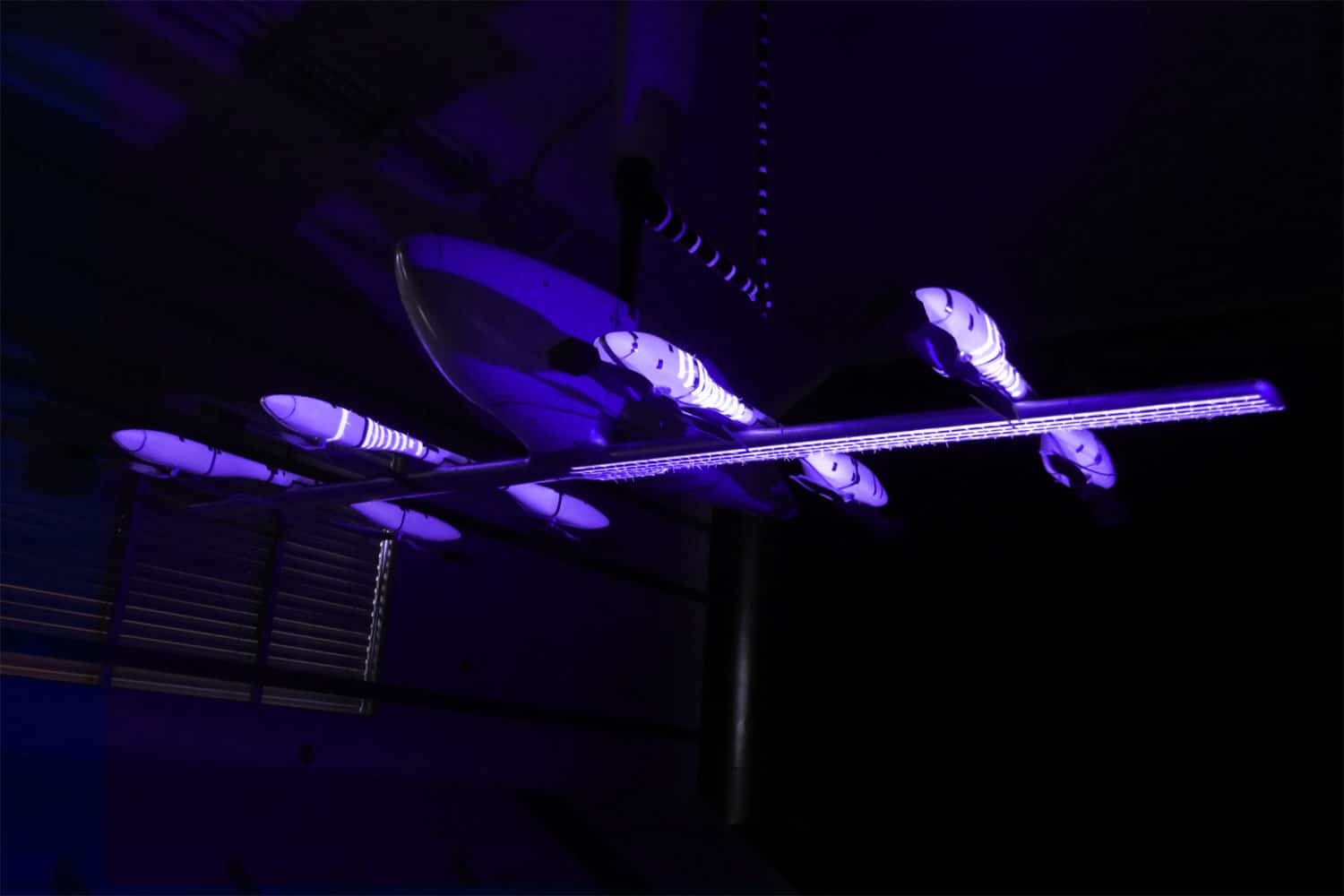
Brazilian eVTOL manufacturer Eve Air Mobility recently completed wind tunnel testing of its electric vertical takeoff and landing (eVTOL) vehicle. Conducted at a wind tunnel near Lucerne, Switzerland, the testing utilized a scale model of Eve’s eVTOL, which is projected to enter service in 2026.
Wind tunnel testing is an important engineering tool used in the development of an aircraft. It allows engineers to monitor the flow of air over and around the vehicle and each of its individual parts. The testing is also used to measure the aerodynamic forces and moments acting on the vehicle, allowing the team to evaluate the vehicle’s lift, efficiency, flying qualities, and performance.
The main test objective was to investigate and validate how components, including fuselage, rotors, wing, tail, and other surfaces, would perform in flight. Wind tunnel testing provides a unique view of the aerodynamic behavior of complex geometry and provides a higher level of validation of design characteristics. These tests are part of an effort to acquire experimental data to validate production solutions, development tools, and models, which also includes other test articles such as fixed and moving rigs, flying vehicles, and other wind tunnel tests.
“The completion of wind tunnel testing is an important engineering milestone as we continue the development of our eVTOL,” said Luiz Valentini, chief technology officer at Eve Air Mobility. “The information we obtained during this phase of development has helped us further refine the technical solutions of our eVTOL before committing to production tooling and conforming prototypes. Our goal is to design, produce and certify an aerodynamic and efficient eVTOL that will be used for a variety of urban air mobility missions.”
The data gathered through wind tunnel testing will be used to continue to develop the eVTOL’s control laws leading to optimal performance and passenger comfort.
Eve’s eVTOL is designed as a multipurpose aircraft that can be adapted for different types of operations in urban settings. It is 100% electric and has a range of 60 miles (100 km), allowing it to complete a variety of urban air mobility missions. Its human-centered design ensures the safety, accessibility, and comfort of passengers, the pilot, and the community by minimizing noise.
The aircraft features a lift + cruise configuration with dedicated rotors for vertical flight and fixed wings to fly on a cruise, with no components required to change position during flight. It will be piloted at launch but ready for autonomous operations in the future.
By the end of last year, the company had already secured an impressive number of pre-orders, amounting to nearly 3,000 units. The Brazilian AAM company hopes to launch its electric air taxi in 2026 officially.
Eve Air Mobility completes wind tunnel testing of its eVTOL aircraft
Source: Tambay News

0 Comments